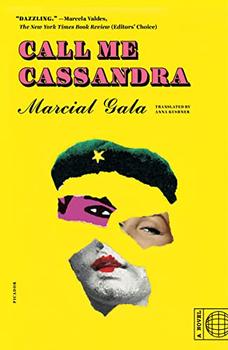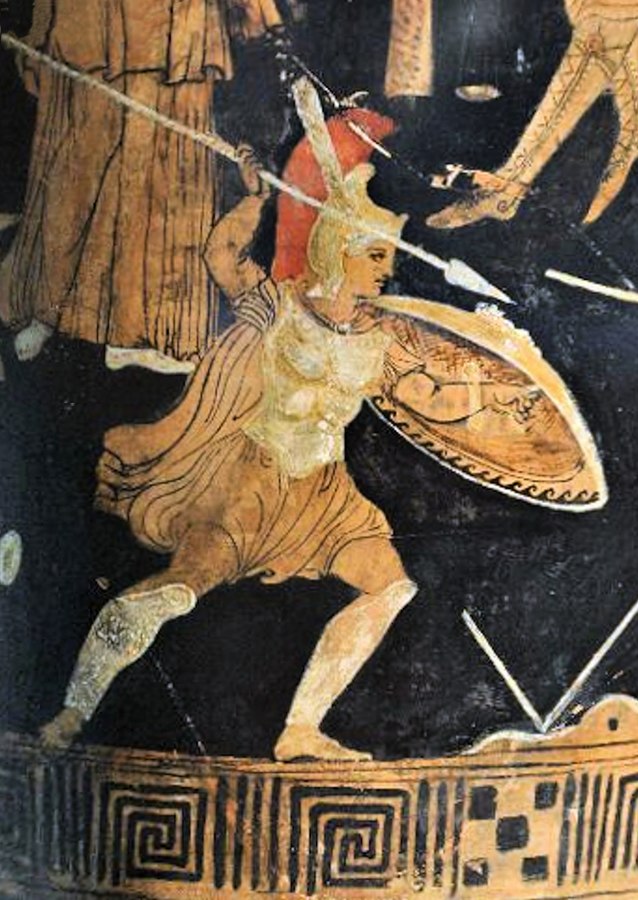Summary | Excerpt | Reviews | Beyond the Book | Read-Alikes | Genres & Themes | Author Bio

A Novel
by Marcial GalaThis article relates to Call Me Cassandra
 In Call Me Cassandra by Marcial Gala, the main character is visited by the Greek goddess Athena and instructed to read a Cuban edition of the Iliad, the epic poem attributed to the ancient Greek poet Homer and maintained through centuries of oral tradition.
In Call Me Cassandra by Marcial Gala, the main character is visited by the Greek goddess Athena and instructed to read a Cuban edition of the Iliad, the epic poem attributed to the ancient Greek poet Homer and maintained through centuries of oral tradition.
The poem focuses on certain events towards the end of the Trojan War, including the siege of the Greek city of Troy, which was also called Ilios at the time — and is referred to this way in Gala's novel. Homer's epic opens nine years after the start of the war, which began when Paris, the son of the Trojan king Priam, ran off with Helen, the wife of the Achaean king Menelaus, inciting the Achaeans to send an army to Troy after her.
Broken into 24 books and over 15,000 lines long, the Iliad follows the warrior Achilles as he has a dispute with Agamemnon, the Achaean leader, and refuses to fight the Trojans while attempting to turn the gods against his own side. The actions of the gods are shown alongside those of the people doing battle, as the deities engage in a kind of proxy war through humanity — with Apollo, Aphrodite and Ares fighting with the Trojans and Athena, Hera and Poseidon supporting the Achaean forces. Achilles eventually takes up arms against the Trojans, enraged by the death of his friend Patroclus, and after much more death and destruction, including Achilles' killing of the Trojan leader Hector, a truce is declared.
Cassandra, the daughter of King Priam and his wife Hecuba, and the sister of Hector, is central to Gala's novel but only appears as a secondary character in the Iliad. In Homer's epic, she is said to be the most beautiful of Priam's daughters and is portrayed largely as an object of male desire. Other sources, such as Aeschylus' Agamemnon, show her as a prophetess who could see the future, predicting events such as the fall of Troy.
The Iliad was passed down through oral tradition for hundreds of years and eventually written down sometime around the 8th century BCE. The oldest surviving manuscript was discovered by a French scholar at the end of the 18th century AD in a Venetian library. Called Venetus A, it is believed to have been created circa the 10th century AD in Constantinople and contains notes made by scholars in the Greek city of Alexandria at some point between the first centuries BCE and AD.
Today, the Iliad is considered a major foundational work of literature alongside Homer's other well-known epic poem the Odyssey. It is internationally known and has been translated into numerous languages, inspiring many other works of fiction. In the last decade alone, these range from new dedicated tellings of Greek myth, such as Natalie Haynes' A Thousand Ships, Pat Barker's The Women of Troy and Madeline Miller's The Song of Achilles, to more piecemeal borrowings, such as Gala's rendering of Cassandra as an immortal prophetess born into the body of an ordinary person in 20th-century Cuba. The events depicted in the Iliad also have frequently emerged in pop culture, such as in the 2004 movie Troy, starring Brad Pitt and Eric Bana.
Greek pottery painting depicting Achilles circa 300 BCE, courtesy of Wikimedia Commons
Filed under Books and Authors
![]() This "beyond the book article" relates to Call Me Cassandra. It originally ran in February 2022 and has been updated for the
January 2023 paperback edition.
Go to magazine.
This "beyond the book article" relates to Call Me Cassandra. It originally ran in February 2022 and has been updated for the
January 2023 paperback edition.
Go to magazine.
Your guide toexceptional books
BookBrowse seeks out and recommends the best in contemporary fiction and nonfiction—books that not only engage and entertain but also deepen our understanding of ourselves and the world around us.